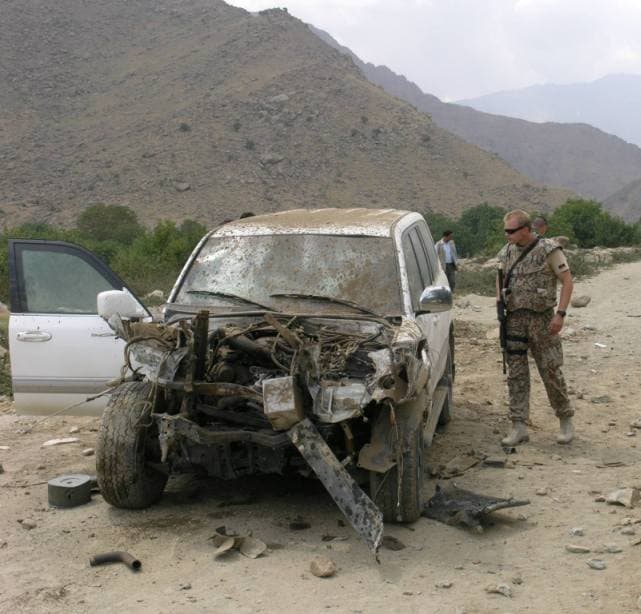Researchers Develop New Material Which Lights Up On Detecting Explosives
In a world constantly under the grip of terror activities, scientists have created a material which turns fluorescent if there are molecules from explosives in the vicinity. Researchers from University of Southern Denmark have created the material, consisting of a set of molecules TTF-C[4]P and TNDCF. The compound can be used to create a device which could help security staff in airports test if there are explosives molecules on or near a bag, explains Steffen Bähring, lead author of the research.

The biggest USP of the material is its tested reliability as it only turns fluorescent when exposed to molecules from the explosive TNB and some specific salts, such as those based on chlorine or fluorine. The material consists of molecules held together by weak bonds. Weakly bonded molecules form substances that can easily switch form and constantly respond to environment and hence also are easily influenced by it. Owing to this, understanding, controlling and working with weakly bonded molecules was a huge scientific challenge, and thus makes this creation all the more worthwhile.

Bähring by a car, hit by a roadside bomb, in Afghanistan
There have earlier been attempts of development of chemical substances capable of detecting explosives; however they could not be relied upon entirely. They became fluorescent when there were no explosives molecules in the vicinity and the fluorescence disappeared if the substance came into contact with explosive molecules. But several other factors could make the fluorescence disappear, some salts have this effect too; thus triggering a false alarm.
The research paper was published in the journal #-Link-Snipped-#
Source: #-Link-Snipped-#

The biggest USP of the material is its tested reliability as it only turns fluorescent when exposed to molecules from the explosive TNB and some specific salts, such as those based on chlorine or fluorine. The material consists of molecules held together by weak bonds. Weakly bonded molecules form substances that can easily switch form and constantly respond to environment and hence also are easily influenced by it. Owing to this, understanding, controlling and working with weakly bonded molecules was a huge scientific challenge, and thus makes this creation all the more worthwhile.

Bähring by a car, hit by a roadside bomb, in Afghanistan
There have earlier been attempts of development of chemical substances capable of detecting explosives; however they could not be relied upon entirely. They became fluorescent when there were no explosives molecules in the vicinity and the fluorescence disappeared if the substance came into contact with explosive molecules. But several other factors could make the fluorescence disappear, some salts have this effect too; thus triggering a false alarm.
This new material could greatly aid in ramping up the security at airports and other such vulnerable places, to be able to scan baggage and ensure that no explosives slip past. The time for security checks, and inconvenience of passengers could also be greatly reduced. The lead researcher Steffen Bähring got interested in detection of explosives when he was in Afghanistan in 2005 with the Danish International Brigade and thus worked for developing the same.The research paper was published in the journal #-Link-Snipped-#
Source: #-Link-Snipped-#
0
